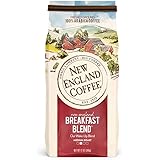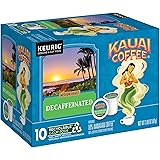Crafting the Perfect Homemade Cappuccino: A Comprehensive Guide
Approximately 70% of coffee drinkers consume at least one cup daily. Many aspire to recreate café-quality beverages at home. The video above offers a straightforward cappuccino recipe at home, demonstrating essential steps. This guide delves deeper. It expands on the techniques shown. You can elevate your home barista skills. Learn to achieve a rich, satisfying homemade cappuccino.
Mastering the Coffee Base: From Powder to Punch
The foundation of any great cappuccino is its coffee base. The video specifies 1 tablespoon of coffee powder. It also suggests 2 teaspoons of water. This creates a concentrated coffee paste. This method is effective without an espresso machine. For those with equipment, an espresso shot is ideal.
Creating a Rich Coffee Paste
Use a finely ground coffee powder. Darker roasts often yield a stronger flavor. Combine 1 tablespoon coffee powder with 2 teaspoons of water. Add 2 teaspoons of sugar, if desired. The video notes sugar is optional. Subsequently, blend this mixture vigorously. Stir with a spoon until the color changes. It transforms from dark brown to a lighter, creamy brown. This process aerates the coffee. It also fully dissolves the sugar. This creates a smooth, emulsified base. This step is crucial for depth of flavor.
The Espresso Alternative
Authentic cappuccinos feature espresso. An espresso shot delivers concentrated coffee flavor. If you possess an espresso machine, use one shot. This provides the classic crema. Crema is a reddish-brown foam. It rests on top of the espresso. It adds texture and aroma. Without a machine, consider alternatives. A Moka pot produces strong, concentrated coffee. An AeroPress also creates rich, intense brews. Even a French press with finely ground coffee works. Ensure the brew is strong and dark. This mimics espresso’s intensity for your homemade cappuccino.
Achieving Velvety Froth: Milk Preparation Secrets
The hallmark of a cappuccino is its frothy milk. The video shows whisking milk until it becomes frothy. This section elaborates on milk preparation. It covers techniques and considerations. Achieving the right texture is vital. It impacts the drink’s taste and feel.
Selecting and Preparing Milk
Whole milk typically froths best. Its fat content creates stable foam. However, various milk types work. Skim milk produces stiffer, drier foam. Non-dairy alternatives are also popular. Oat milk and almond milk froth well. Always start with cold milk. Cold milk allows more time for aeration. This builds a robust and creamy foam. A cup of milk, as shown, is usually sufficient. This allows for both steamed and frothed components.
Techniques for Frothing Milk
The video utilizes a simple whisk. This is an accessible method. Pour milk into a saucepan. Heat it gently on the stove. Use a whisk to agitate the milk. Whisk it vigorously. Move the whisk in a circular motion. This incorporates air into the milk. Continue until the milk doubles in volume. It should have a light, airy texture. Furthermore, consider other frothing tools. A handheld milk frother is convenient. It creates quick, consistent foam. A French press can also froth milk. Pump the plunger up and down. This aerates warm milk effectively. For advanced users, a steam wand is optimal. It creates silky microfoam. Microfoam integrates seamlessly with coffee. It yields a superior mouthfeel. Ensure the milk reaches 140-155°F (60-68°C). Do not boil the milk. Overheated milk develops an off-flavor.
The Assembly: Bringing Your Cappuccino Together
Once you have your coffee base and frothed milk, assembly is key. The video shows pouring frothed milk into the espresso. This final step transforms components into a delicious homemade cappuccino. The balance of flavors and textures is essential.
Layering Your Cappuccino
First, pour your prepared coffee base into a mug. This is either your rich coffee paste or espresso shot. Next, gently pour the hot frothed milk. Hold back the foam with a spoon initially. This allows the steamed milk to mix. Then, spoon a generous layer of foam on top. The classic cappuccino ratio is precise. It typically includes one-third espresso, one-third steamed milk, and one-third frothed milk. Adjust these proportions to your preference. The video guides you to pour the milk into the espresso. This ensures a consistent blend. Observe how frothy the milk becomes. This visual cue confirms readiness.
Elevating Your Home Barista Skills
Making a homemade cappuccino is an enjoyable process. It allows for personal customization. Beyond the basic steps, there are ways to enhance your drink. Consistent practice improves your technique. Experiment with different ingredients. This helps refine your perfect cup.
Experimenting with Flavor
Consider different coffee roasts. Light roasts offer fruity notes. Dark roasts provide bold, chocolatey undertones. Explore various types of sugar. Brown sugar or maple syrup add distinct flavors. A sprinkle of cocoa powder or cinnamon on top is a classic finish. This enhances aroma and visual appeal. Taste your cappuccino. Adjust sweetness or coffee strength. This personalization defines your perfect homemade cappuccino.







